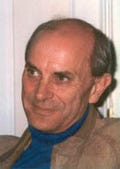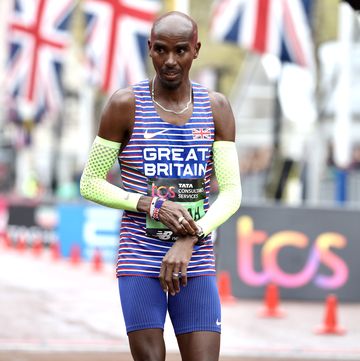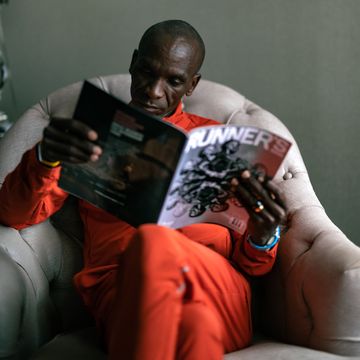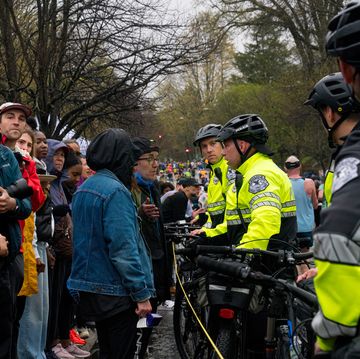John Landy, the widely admired Australian runner who was close to being the first to break 4 minutes for the mile and later became Governor of the State of Victoria, has died. He was 91.
In 1954, Landy became the second person to break the supposedly impossible 4-minute barrier in the mile. In the early 1950s, three far-flung contenders sought that achievement: Landy in Melbourne, Australia; Wes Santee in Kansas in the United States; and Roger Bannister in Oxford, England. Though Bannister famously got there first, on May 6, 1954, Landy hit the mark mere weeks after, and he was the only one of the three to win an Olympic medal, placing third in the 1500 meters at the 1956 Games.
He emerged during that era as a world record-holder, breaking the records for 1500 meters (3:41.8) and one mile (3:58.00) both on June 21, 1954, stunning the world by displacing Bannister only six weeks after the barrier was first broken. Landy ran 1.4 seconds faster than Bannister’s first sub-4 mile.
More From Runner's World

It’s indicative of Landy’s legend and character that he is commemorated in two bronze statues, half a world apart, and each statue represents an episode significant in running history for something other than victory. In Vancouver, the bronze captures the crucial moment in the “miracle mile” in the 1954 British Empire Games, the much anticipated confrontation between history’s only two sub-4:00 milers at that date. It immortalizes the split second when Landy, after leading hard for the most of the race, is coming off the final bend, and glances back over his left shoulder left just as Bannister surges past him on his right. Both broke four minutes, the first time that was ever achieved in one race.
The other sculpture, outside the Melbourne Cricket Ground (MCG) sports complex, shows the incident during the 1956 Australian national 1500-meter championships when the young Ron Clarke was tripped and fell. Landy had to leap over him, grazing his arm, but then stopped and turned back to help him to his feet. After assuring himself that Clarke was not seriously hurt, Landy made up about 35 yards (an estimated 5 seconds) on the leaders, won the race, and qualified for the 1956 Olympics.
Landy’s impulsive gesture, risking his Olympic place, and his come-from-behind win, have become intrinsic to Australia’s self-definition as a sporting nation. He was praised throughout his career for “perfect sportsmanship on and off the track,” in the words of a special award sent from the English Amateur Athletic Association.
Landy might well have been the one to achieve greater fame as the first under four minutes. He ran 4:02 several times in the hot Australian summers from 1952 to 1953 and 1953 to 1954, all on grass tracks. On the occasion of his best chance, he stepped on a football stud early in the race and ran with its nails in his foot. He never had pacemakers in the way Bannister received pacing and shelter on May 6, 1954.
In 1954, almost as soon as he reached the fast cinder tracks of Scandinavia, Landy, in Turku, Finland, ran his 3:58.00 (rounded up from 3:57.9 under the rules of that time). He led entire the way after 600 meters, and it stood as the world record for three years.
Usually a front runner with a limited finishing sprint, Landy won no major gold medals. He was second to Bannister in Vancouver, and third behind Ireland’s Ron Delany and Germany’s Klaus Richtzenhain in 1956 at the Melbourne Olympic 1500 meters, a race when he ran near the back and finished fast.
He competed in the 1500 meters and 5000 meters at the Helsinki Olympics in 1952, but did not reach either final. He did, however, benefit there from the friendship of triple gold medalist Emil Zatopek, whose advice led Landy to increase the intensity of his training, producing the 8-second improvement that put him within reach of the 4-minute mile.
Born in Geelong, 47 miles from Melbourne, Landy graduated with a degree in agricultural science from the University of Melbourne in 1954. He rates highly enough as a biological scientist for his biography to be in the New York City Marathon. He held senior posts with an Australian chemical company, and he published two books of natural history, one illustrated with his own photographs.
He was later awarded several honorary doctorates and national and state honors, including the prestigious AC (Companion of the Order of Australia). He served in many public roles, such as president of Greening Australia, and founding member of the Land Conservation Council. He also contributed to his sport in such positions as director of the Australian Sports Drugs Agency and head of the Athletics Task Force.
Sales & Deals.
Landy was appointed Governor of Victoria and served from 2001 to 2006, a significant but non-political position in the Australian system of governance. He was the formal host to British royalty and all other visitors at the Commonwealth Games in Melbourne in 2006. At age 75, he ran the last leg of the baton relay in front of a packed crowd at the Melbourne Cricket Ground, 50 years after he had been chosen to read the Olympic athletes’ oath at the same stadium.
In 2016, he donated his important collection of memorabilia, as the “John Landy Collection,” to the Library of the Melbourne Cricket Club, housed at the MCG. Landy’s high standing in Australia and the world running community belies the notion that winning is the only thing that matters. His own view was balanced and without regrets. “I look at it from where I came from,” he said. “I wasn’t a very talented athlete.”

Roger Robinson is a highly-regarded writer and historian and author of seven books on running. His recent Running Throughout Time: the Greatest Running Stories Ever Told Download Training Plans Running Times and is a frequent Runner’s World contributor, admired for his insightful obituaries. A lifetime elite runner, he represented England and New Zealand at the world level, set age-group marathon records in Boston and New York, and now runs top 80-plus times on two knee replacements. He is Emeritus Professor of English at Victoria University of Wellington, New Zealand, and is married to women’s running pioneer Kathrine Switzer.













